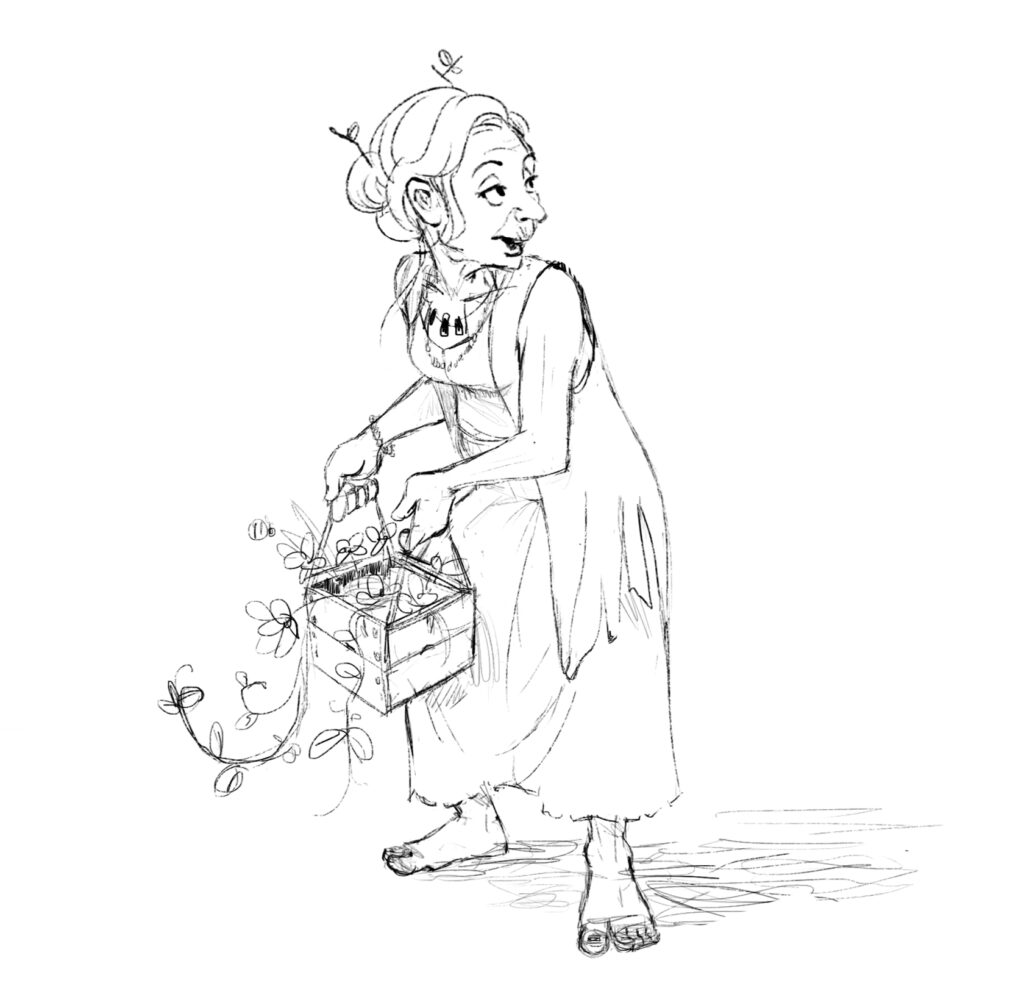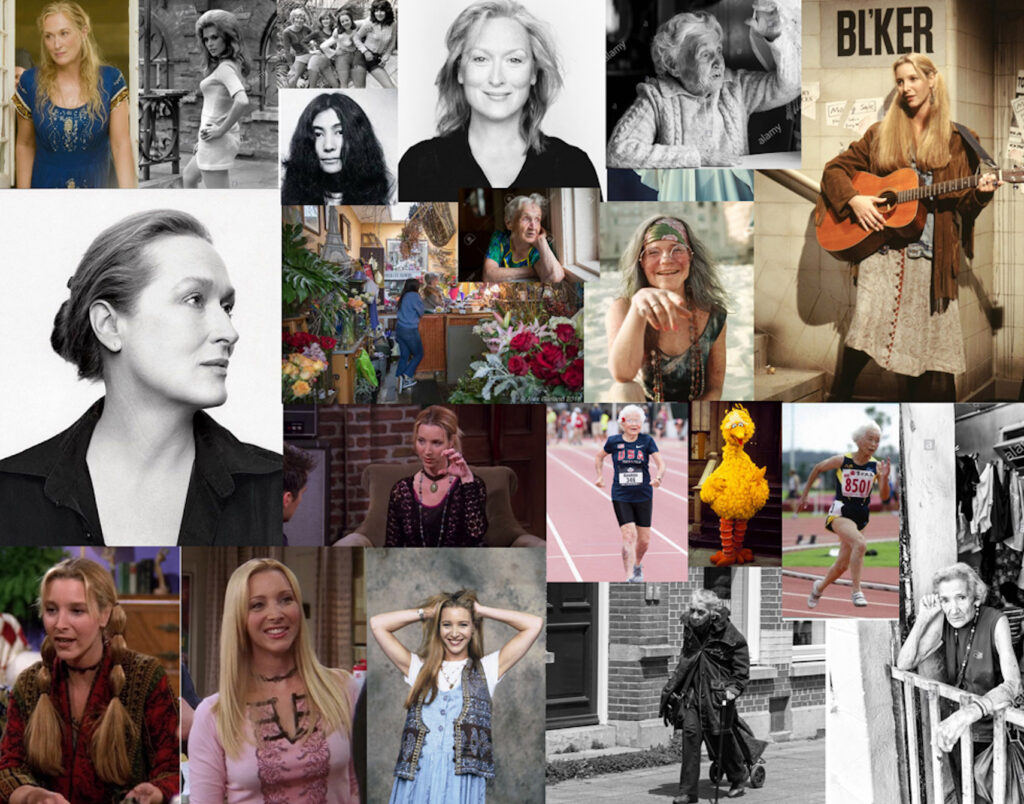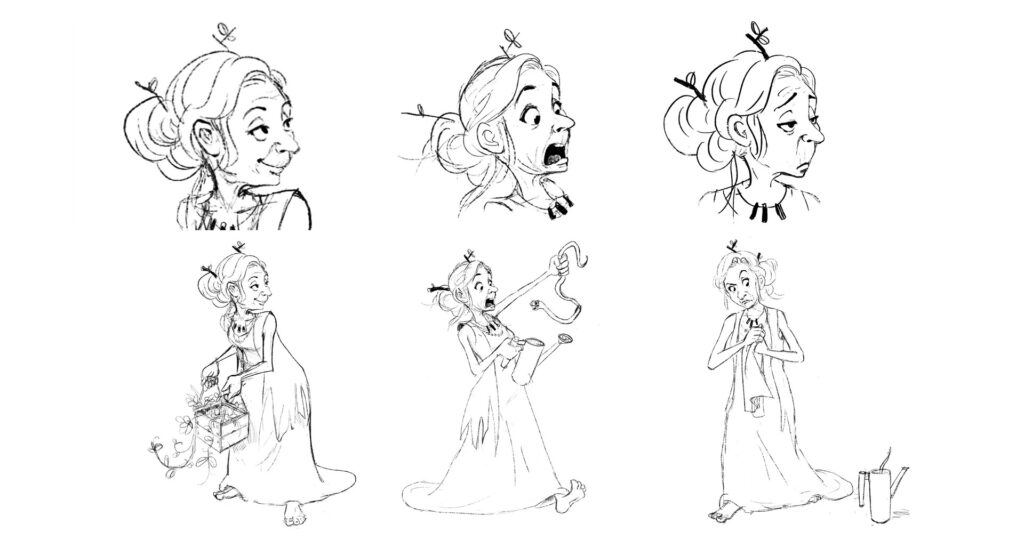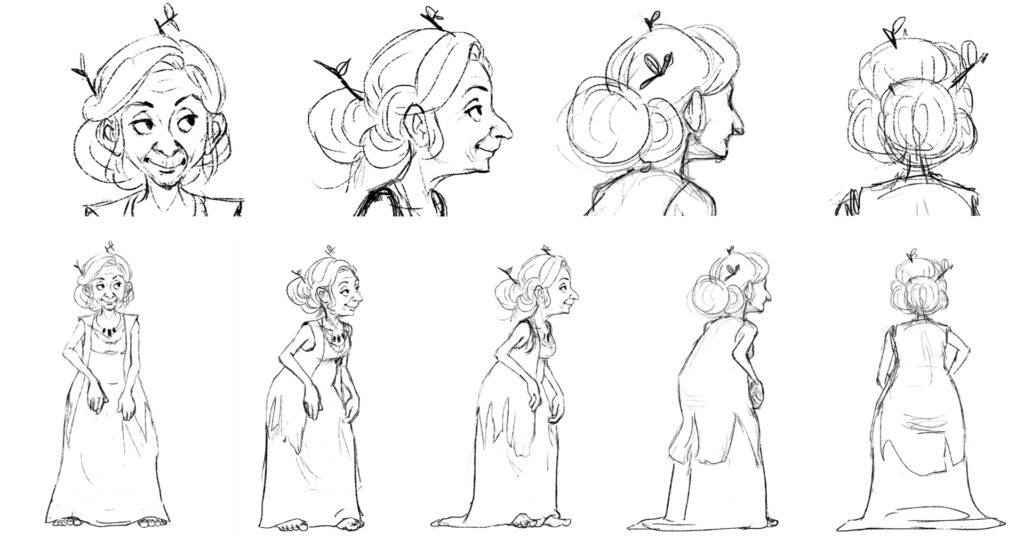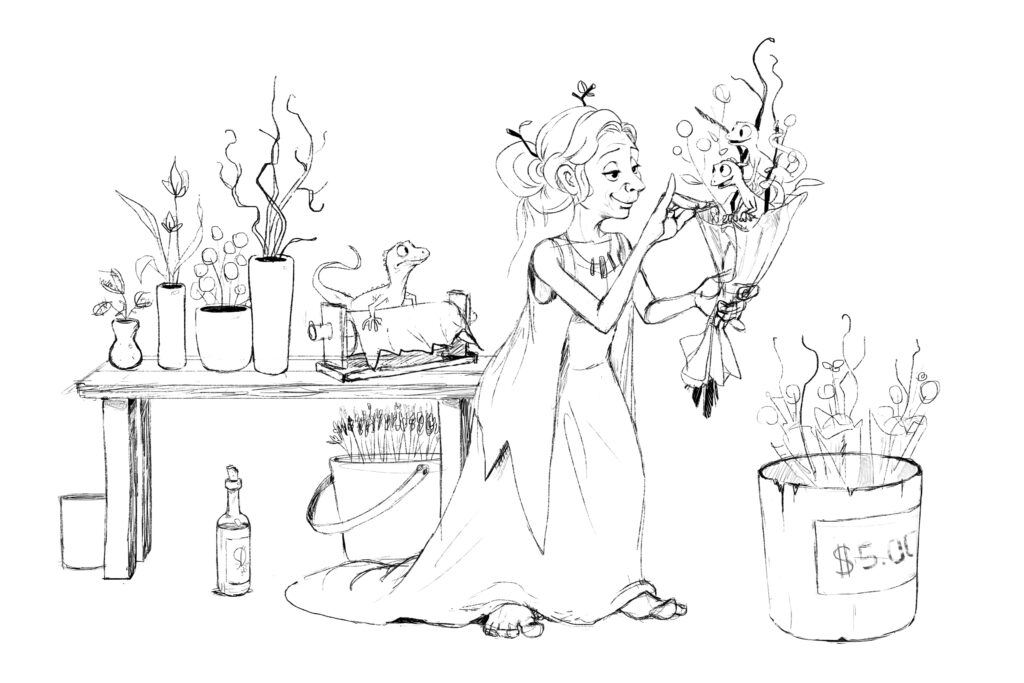4 Steps to Turn Character Ideas into Reality: The Flower Shop Owner
Seattle-based designer Austin Lee shares each stage of creating Carolyn the Flower Shop Owner, from reference pages to tie down and clean up.
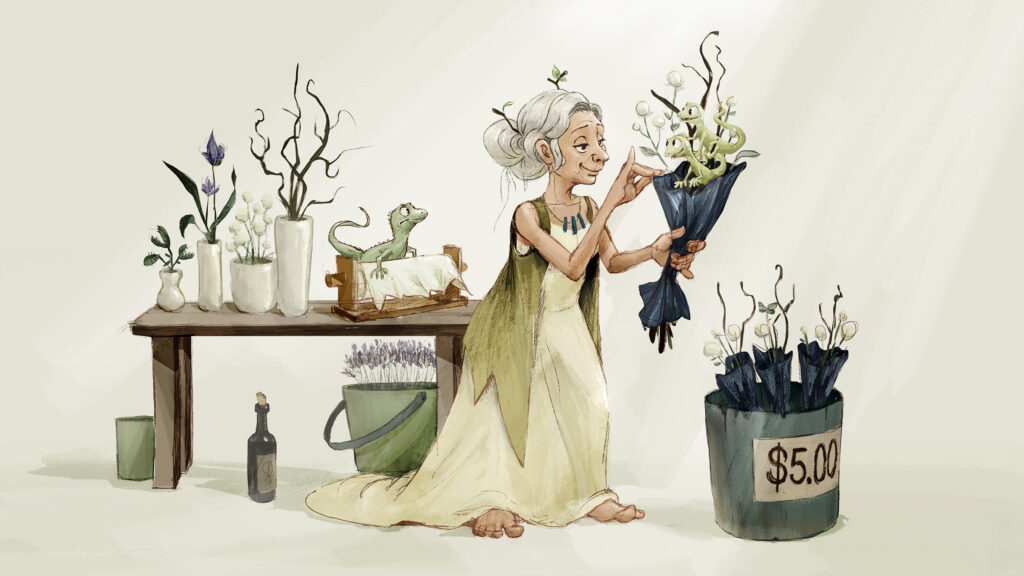
Background
My name is Austin Lee, and I’m a Seattle-based designer. I developed an interest in drawing at a young age, and inspiration from cartoons and animation led me to study visual communication design at college. Later, I studied media design at the Art Center College of Design. In the industry, I’ve worked on AR/VR experiences as a visual interaction designer, which often requires skills in storytelling and concept development.
Initial character sketch
Designing a Character with Story
The following was my description of the proposed character: Carolyn, the flower shop owner, is an aging but a charming hippie lady who loves gardening and nature. They say that she regularly talks not only to her plants but also to animals. She is a bit of a hoarder, but she only collects beautiful plants and surrounds herself with them. While she often looks tired, it is easy to intuit that she is passionate about her work and genuinely enjoys her life at the flower shop.
Character reference sheet
When coming up with the story for the character design, I was inspired by an actual flower shop owner in our area who would often encourage her customers to listen to plants and see if they talk to them when choosing what to buy. She always projected a cool, hippie vibe and was always well-dressed in great color schemes. While reimagining an interesting background story for Carolyn, I began collecting references for the character. I wanted to illustrate how she was very active and energetic when it came to taking care of her plants.
Character Pose & Expression Sheets
Learning how to apply exaggerations in effective ways through stretch and squash was crucial in my design decisions. After receiving feedback from Nate, I refined the character design of Carolyn; I made her less muscular and gave her more exaggerated features, such as extremely thin legs and arms that would contrast with her big, strong, bulky feet and hands. Creating various facial expressions also added more life to the design.
Character Pose & Expression Sheet and Character turn-around
Tie Down & Clean-Up
Moving away from roughs to clean-up was an interesting process. The most crucial element was maintaining the overall feeling of the initial rough sketches while refining and simplifying the design. Imagining the 3-D structure referencing the pose sheet definitely helped a lot.
One of my favorite outcomes in the process was the design of one of the supporting characters, an iguana that was apparently jealous of the twin geckos that constantly grabbed Carolyn’s attention.

Final Style & Portfolio Assembly
The final style was driven a lot by the tie down and clean-up process in week six. Given the relatively short time frame to color the final scene and assemble a portfolio of the entire course, I decided to leverage the line drawings produced during the clean-up process, as opposed to covering up the lines and fully rendering the final shot with color.
Inspired by water color, I focused on generating a digital painting that felt light and had semitransparent look. The fidelity of the painting felt sufficient for this particular scene, which was supposed to show the calm and relaxed state of the characters.
Check out Nate Wragg's course Art Direction for Character Designers for a broader perspective.
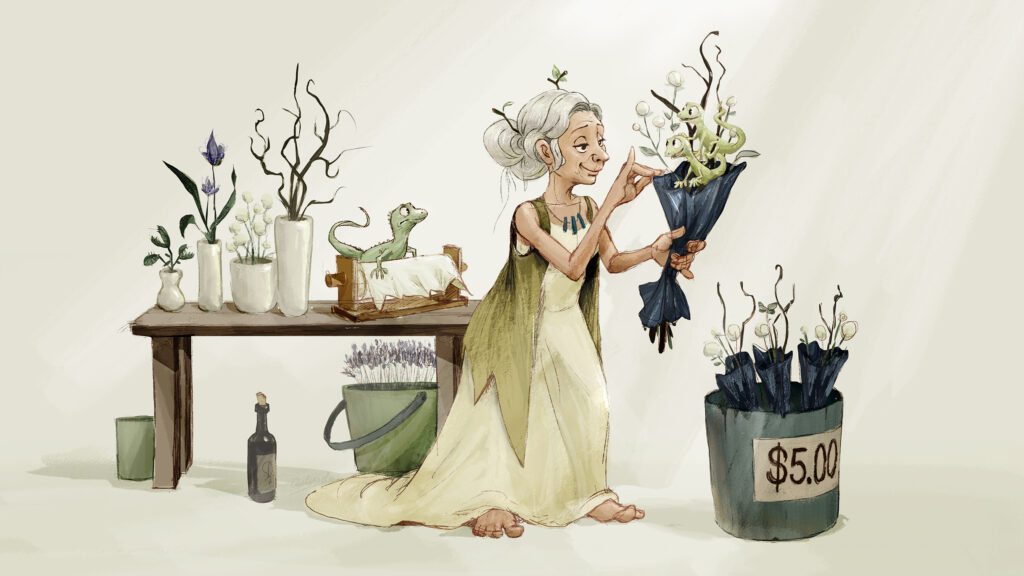
Final painted character piece
Final Thoughts and Take-Aways
- I took CGMA's “Character Design for Production” course taught by Nate Wragg because I’ve always been fascinated by great character design work and the art of animated feature films. I wanted to gain exposure to the production pipeline and learn storytelling skills through character design by taking the course.
- Nate taught how to effectively convey a story through the character design, which enabled me to push my design work further through applying a more stylized approach, as opposed to creating a generic design that felt less appealing and imaginative.
- Nate shared how small details, such as props, can provide rich context for the character. To highlight her everyday life as a flower shop owner, I introduced small reptile residents into Carolyn’s flower shop and illustrated an array of plants that she took care of.
- Trusting the process was extremely challenging in the beginning. In retrospect, especially in the initial stage, I wasn’t sure how the character and her surrounding world would evolve. As a matter of fact, I even thought of working on an entirely different character because I was not feeling confident that I could create an appealing design through a mundane flower shop persona. However, as the design was inspired by a real-life figure, and even after pushing the design, the character still felt believable and relatable to me.
- The process of illustrating and documenting various poses and angles of the character enabled me to understand the structure of the character better and apply better acting. Moreover, being exposed to the production pipeline of character design developing through a holistic approach to storytelling was invaluable in terms of understanding the collaborative processes between directors and art and story departments.

RELATED LINKS
Check out Nate Wragg's courses Character Design for Production and Art Direction for Character Designers.
LEARN MORE
CGMA provides comprehensive instruction for art, games, and visual effects industries in a variety of courses for a range of students, from 2D and 3D artists looking to supplement their college studies to industry professionals looking to stay up to date on emerging trends and techniques in the field.
















